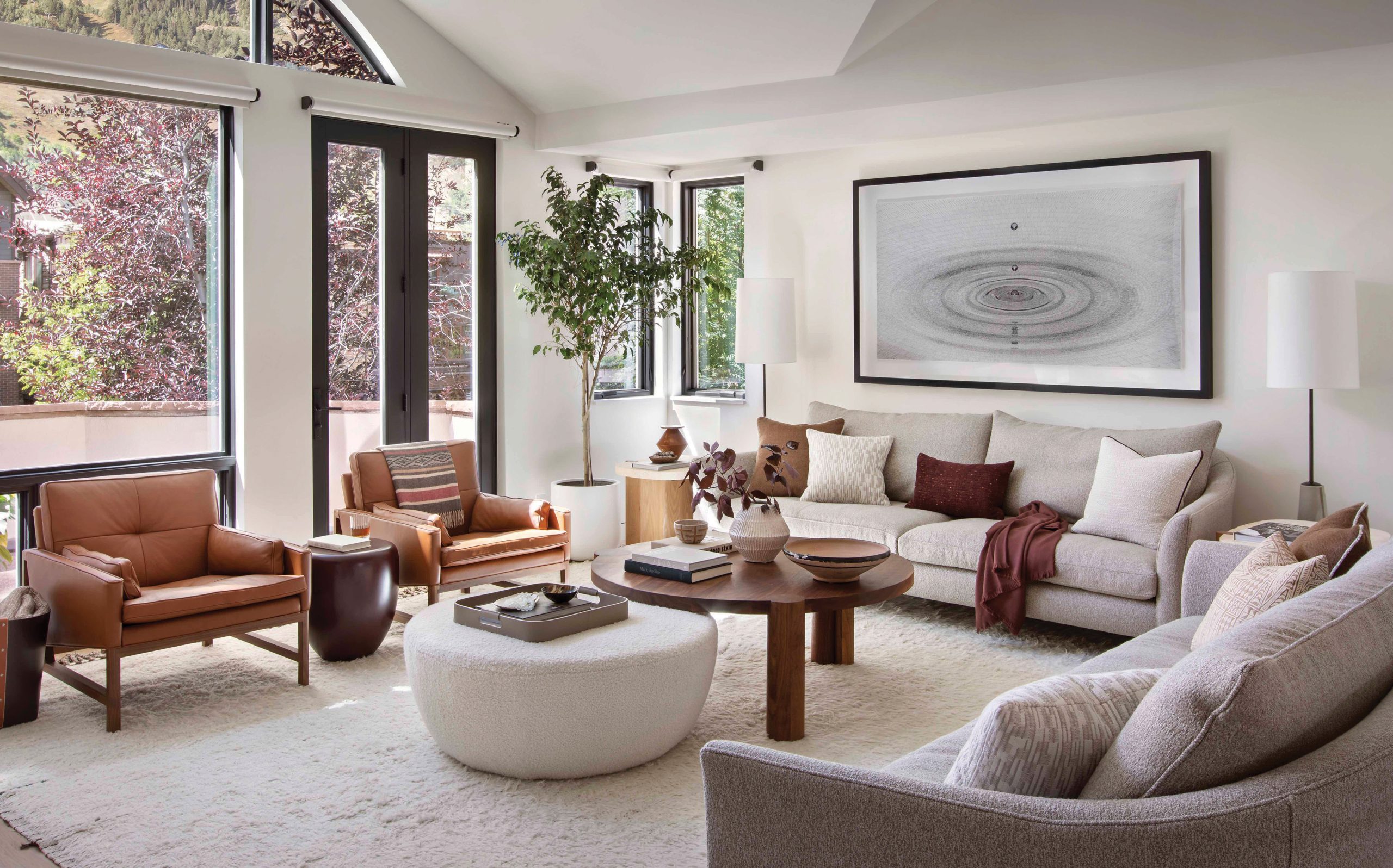
04 Jul Designing the West: A Holistic Vision
Joe McGuire and Matthew Tenzin of Joe McGuire Design consider themselves design nomads. Although their business is based in Aspen and Boulder, Colorado, they have designed projects in Chicago and New York City as well as Miami, Palm Beach, and beyond.
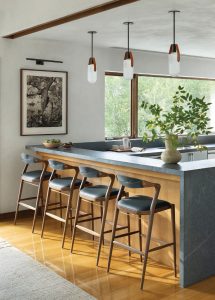
In this kitchen, Angela Barstools from Sossego were upholstered in pigmented natural leather. The frosted pendant lighting is from Allied Maker. The black-and-white photograph, The Lovers, is by Beth Moon. Photo: Gibeon Photography
McGuire started the business in 2005 after working for others for 10 years. Aspen’s sense of community and support were key factors in his decision to open his practice there. Tenzin, with a background in fine art, brought his own clear aesthetic understanding when he joined the firm in 2012.
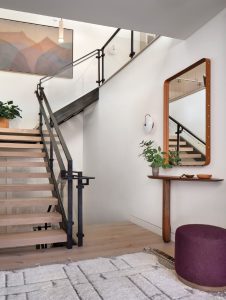
In a foyer, a custom single-leg table is the perfect partner to the Una Malan ottoman, which was upholstered in Rogers & Goffigon Wool Boucle. Photo: Gibeon Photography
The pair met in 2008 while attending a meeting with the Dalai Lama in Aspen. They discovered they had many common interests, including a devotion to Buddhist meditation. Tenzin explains why he turned to the practice early on: “The Dalai Lama talked about the experience of feeling calm and peaceful, which I was wanting and needing. I started to meditate while I was living in Chicago next to the L tracks that would shake my apartment every 20 minutes — that I could meditate through that got me excited.
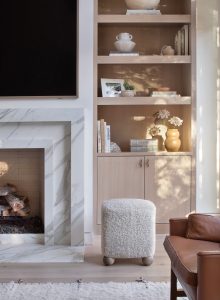
Calacatta marble surrounds a fireplace in this gathering room. The cabinets are crafted from rift white oak to complement the soft color palette in the tranquil space. Photo: Gibeon Photography
“I discovered that whenever I was in the presence of Tibetan monks, I had deep feelings of home, so I became a monk. I was ordained in 2003 with the Dalai Lama and spent three years in Tibetan Buddhist monasteries in India, Nepal, France, and Australia; I spent the last two and a half years in a solitary meditation retreat in a remote valley in Big Sur, California.”
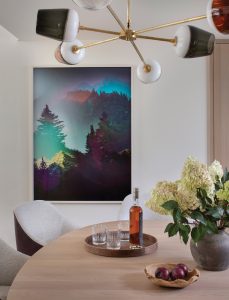
A hand-blown glass chandelier with satin brass accents by Joseph Pagano highlights the oak dining table from Spazio Ellipse. Hexton Gallery of Aspen supplied the Terri Loewenthal photo. Photo: Gibeon Photography
The twists and turns of their lives brought McGuire and Tenzin to relocate to Boulder in 2009 — a place that resonated with both of them on a personal and professional level. For Tenzin, who grew up in Colorado Springs, Boulder offered the perfect blend of natural beauty and a community rooted in holistic living. McGuire, too, felt an immediate connection. “Boulder has some of the same qualities as my hometown,” he says, recalling his upbringing in Santa Fe, New Mexico. “There are natural healers, a sense of spirituality — it has a certain unique way of living that I love.”
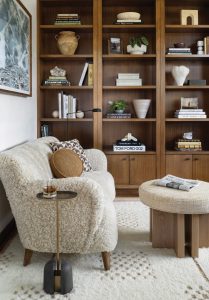
This chic office suite features a vintage 1940s Danish cabinetmaker loveseat reupholstered in sheepskin. Joe McGuire Design designed the ottoman. Photo: Kimberly Gavin
Joe McGuire Design is recognized for designing high-end, contemporary homes. Their approach to interiors integrates their unique backgrounds in meditation and spirituality, infusing their projects with a sense of tranquility and balance that goes beyond aesthetics. In 2020, the firm received the Best Residential Interior Design Award from the International Interior Design Association, Rocky Mountain Chapter.
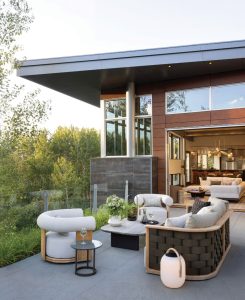
Molteni&C created the outdoor sofa with a woven olive-green teak frame and beige jacquard fabric. Harbor Collins swivel chairs feature Copacabana fabric and natural teak. Photo: Kimberly Gavin
Tenzin and McGuire’s journey into holistic design led to the development of a new division within their design practice, Home Within, in 2017. This division focuses on health, sustainability, and energy balance within the design process. Their dedication to this practice stems from their belief that the spaces we inhabit have a profound impact on our overall health and happiness. “It is an intentional and holistic approach to design. We are passionate about creating spaces that feel as good as they look, and that support personal growth and well-being on all levels,” says McGuire.
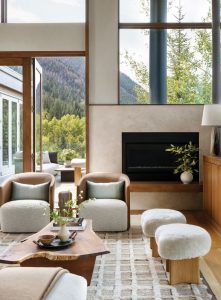
On top of a wool Moroccan rug from Mehraban is a treasured 1960s George Nakashima walnut coffee table, purchased through Galerie Half. The Holly Hunt Volta Lounge Chairs are upholstered in Romo Group’s Tres Boucle. Two peanut stools from the Invisible Collection complete the room. Photo: Kimberly Gavin
The designers may use energy-balancing techniques to enhance a living space or employ shamanic and Buddhist principles to ensure the environment resonates with positive energy and promotes a sense of calm. McGuire recounts a story about a client who had an autistic son who enjoyed rearranging furnishings, piling them up in the center of a room. “He’d do the same thing the next day and the next,” he says. “After we remodeled their home, he was calm and no longer rearranged the furnishings. There was an energetic shift in the spaces, which is more than beauty and arrangement; it’s the energy of places that we offer help. Places and spaces can be out of balance and not feel settled or calm; it’s then that we employ shamanic and Buddhist practices to change those things energetically.” This holistic approach has garnered them a loyal clientele who appreciates the depth and intention behind their work.
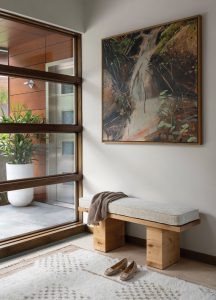
A hallway stairwell is anchored by a Bertu Home Suelo Bench and landscape oil painting by Forrest Moses from LewAllen Galleries in Santa Fe, New Mexico. Photo: Kimberly Gavin
“Clients have their own sense of what the energy of a space feels like,” Tenzin says. “Everyone can feel energy no matter what their training is or if they do meditation or not.”
The initial phases of their design process focus on the physical aspects — specifically, the budget, timeline, and planning. However, McGuire and Tenzin also encourage their clients to take a moment to pause and consider what the energy is around them, to connect to their inner vision for what’s possible, and clarify it before the design process begins. “When we help our clients slow down, we often help them by guided visioning out of the rational mind into a different state,” Tenzin says. “There they connect to visions for the home they may not have thought of — deeply meaningful visions, allowing the home to be a powerful rejuvenating place, a place of true wellness.”
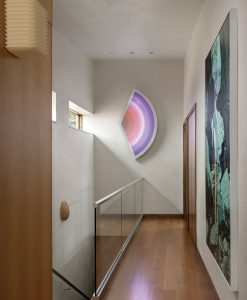
A Phillip K. Smith custom light installation from Hexton Gallery in Aspen, Colorado, lights up a stairway landing. Photo: Kimberly Gavin
In noting that the holistic design process creates healthier spaces, McGuire explains, “We spend 90 percent of our time indoors, so our spaces have an impact on our lives. More and more, homes are sealed from outside energy for efficiency reasons, and we breathe recirculated air. Many of the products we live with have chemicals that emit off-gassing, which we are inhaling.” For their clients, the duo utilizes non-toxic items that affect personal wellness, and they offer sustainable natural materials for furnishings.
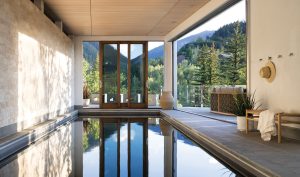
The pool in this wellness-focused residence is but one of its features. There’s also a hot tub, massage room, and gym. The home is outfitted with natural fiber fabrics and rugs throughout, as well as vintage and recycled materials. Photo: Kimberly Gavin
Tenzin sums up their Home Within design practice by saying, “A holistic home is toward the ‘whole,’ which is connected to health. To create a space to heal and be whole where one can experience real health and well-being within, that is our goal.”
WA&A senior contributing editor Shari Morrison has been in the business of art for more than 40 years. She helped found the Scottsdale Artists’ School and the American Women Artists and directed the Santa Fe Artists’ Medical Fund for some years.
Q&A
Joe McGuire and Matthew Tenzin share design tips and inspirations.
Q: If a client wants to avoid the look of a showroom at home, what should they look for in an interior designer?
A: If you don’t like the look of a showroom, find a design firm with variety and personality in their portfolio. We love to work with a family’s collected pieces, as they add a sense of history. Also, look for those who mix in one-of-a-kind pieces by makers and artists; these have more life force in them than manufactured items.
Q: How does one create a serene home?
A: The feeling of serenity comes from the aesthetics and the energetics of a space. Calm, soothing colors like earth tones and natural materials help. Reducing clutter also makes a big difference. We find that spaces hold energy and emotion. By clearing any old imbalanced energy from former occupants and filling our homes with positive thoughts, emotions, and intentions, one begins to feel those spaces more positively.
Q: How does lighting play a role in interior design? Are there natural lighting products that promote better health?
A: Natural light is a key element of well-being in any home and plays an important role in mood and sleep. The unnatural color temperatures of most modern
LED bulbs can throw this off while also making spaces look less aesthetically appealing. This is why we always use “dim-to-warm” LEDs, such as Philips Warm Glow bulbs, that are bright during the day and dim to a cozy amber tone at night. Whenever possible, we also recommend circadian lighting products, such as Lutron Ketra, that sync with the color of sunlight throughout the day. This supports our natural circadian rhythms and sleep cycles while creating beautiful, functional spaces.
Q: Does mood lighting, with its changing colors, alter the energy of a space?
A: Dim amber mood lighting at night is helpful for relaxation and for stimulating oxytocin, the ‘love hormone.’ Think about how it feels sitting around a
campfire or candlelight — it relaxes us for a reason. It also signals to the body that it is time to unwind and prepare for sleep.
Q: What details should you pay attention to in the landscape to enhance the experience of one’s home?
A: We recommend walking the land and tuning into all the little details: the colors and textures of the rocks and trees, the fragrances, the breezes, the vistas, and the sight lines. Sit on the land for a little while and watch the light. Notice how you feel sitting in one place versus another. If you tread lightly with a spirit of respect and curiosity, and if you take a little time to listen to the land, it will speak to you.





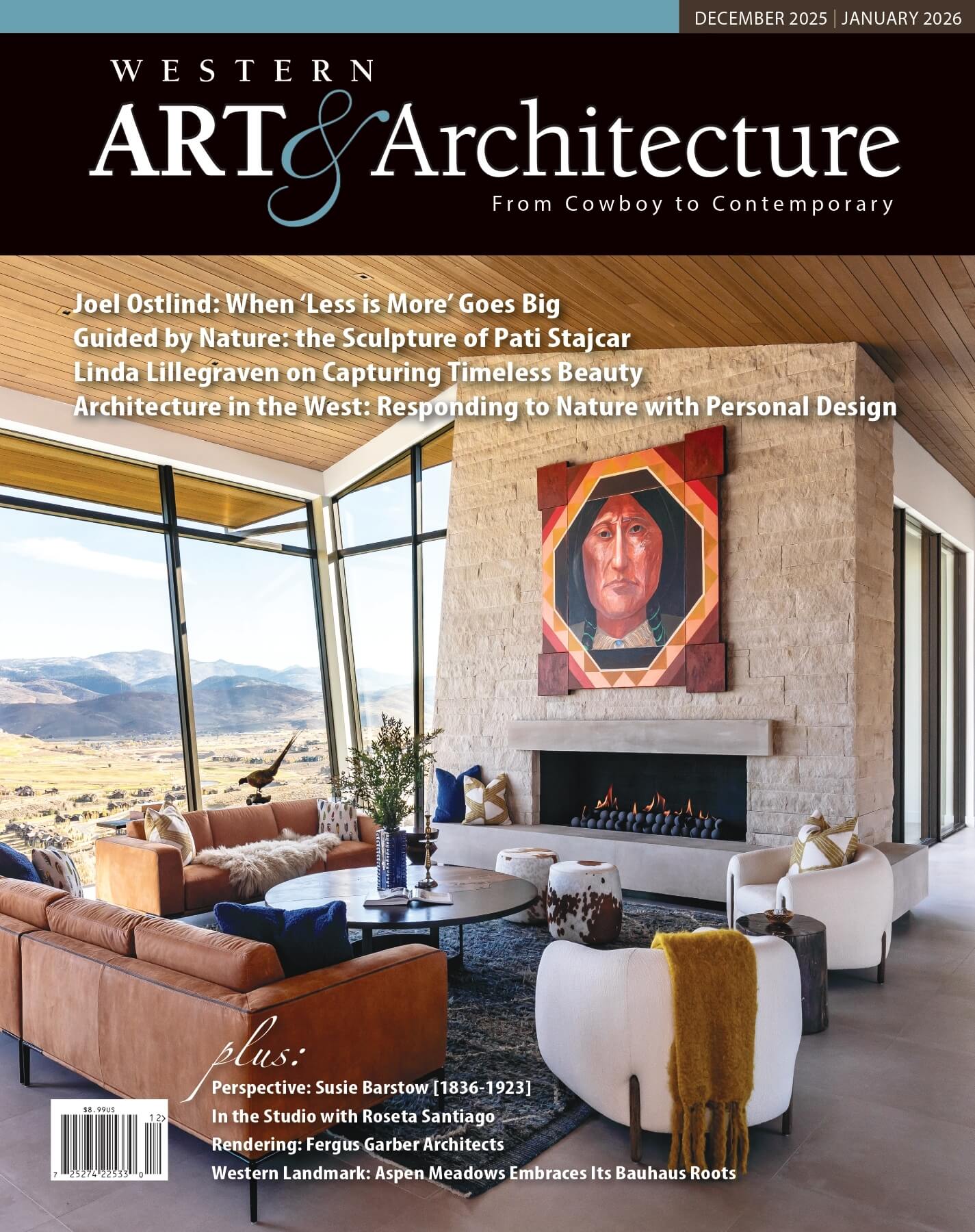
No Comments